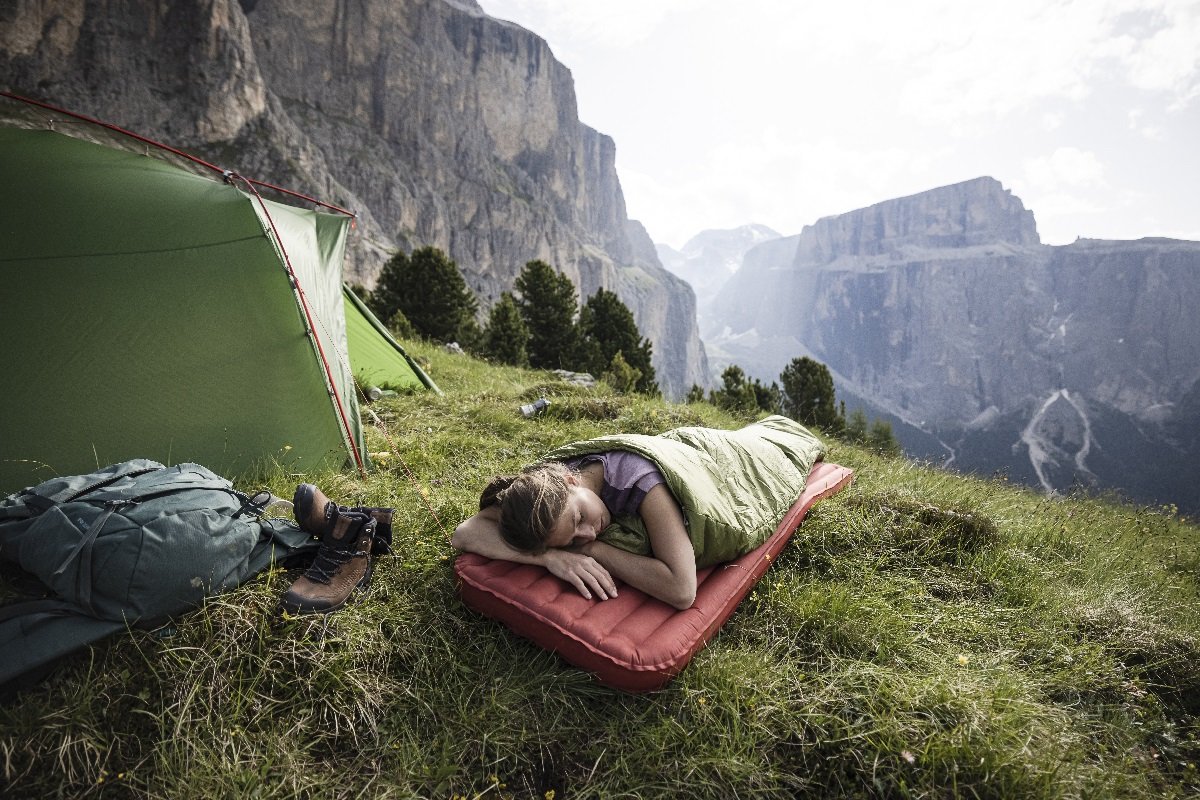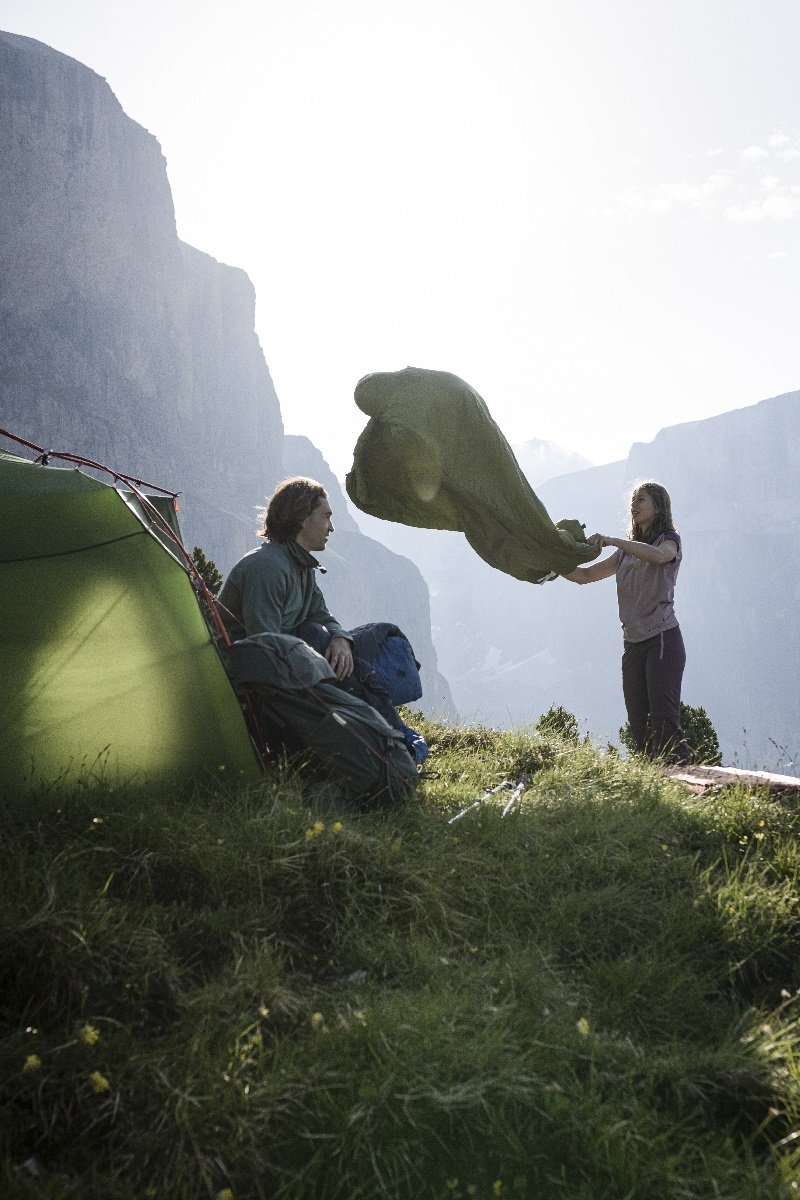
Highlights
- Air the sleeping bag regularly to prevent unpleasant odours.
- Use a specialist detergent to preserve down or synthetic fill.
- Opt for a 30°C wash, either by hand or in a machine depending on the care label.
- Avoid wringing the down during spin-drying to prevent damage.
- Add a few tennis balls to the drum to stop the down from clumping.
- Tumble dry on a low heat and regularly check for down bunching.
- If air drying, turn the bag frequently and allow several days to dry completely.
- Synthetic insulation can be washed like down but dries more quickly.
- Use a sleeping bag liner to reduce the need for frequent washing and keep the interior clean.
- Minimise dirt by using a sleeping mat and avoiding damp conditions.
How to care for your sleeping bag: how to wash it?
For nature lovers, the sleeping bag is a key element of the required equipment to hike for multiple days and backpack peacefully or simply go on a camping trip during the holidays. Over time, after using it for a while, unwanted odours can appear, as well as a greasy aspect on the hood or collar because of the contact with your face and hair in addition to dirt more broadly speaking.
This is when arises the question of taking care of and washing it. How to wash your sleeping bag? A legitimate question, which may seem difficult to answer. Indeed, the washing process depends on the fill type. With some advice and a few tips, this task is easier than it seems. Of course, you should keep in mind that washing your sleeping bag too often can weaken its fabric and reduce its thermal qualities, especially in the case of synthetic fibres.
Washing methods
Hand washing: simple and effective
As soon as your sleeping bag starts to be dirty or smell bad, you can use simple methods to wash it. One of the first things to do in case of bad smells is to air it out for at least a day, if you want to avoid the water and soap solution. Of course, this method cannot be fully effective, and smells can remain. In this case, you will need to use water and dedicated detergent to clean your sleeping bag. The same applies if there is dirt on the surface. A wet face cloth or brush on the dirty areas can be enough. If dirt is embedded, you will have to resort to deep cleaning and soaking it.
Can you machine wash a sleeping bag?
The answer is simple: yes! Of course, you need to make sure of it by reading the manufacturer’s tag to avoid damaging it. Machine washing is possible whether it is a synthetic fibre or natural down sleeping bag. You will need to follow a few cleaning steps for your sleeping bag to retain its thermal qualities and pristine aspect.
How to wash a natural down sleeping bag?
Hand washing a down sleeping bag
For hand washing your down sleeping bag, use warm 30° water and dedicated detergent to avoid damaging the down and feathers, as standard detergent could cause damage. You will find dedicated detergents, also used for down filled garments. Let your sleeping bag soak in a bathtub or large tub for a few hours. Don't hesitate to apply pressure on the sleeping bag with your hands to let water penetrate it.
After soaking it, it’s time to squeeze water out. Avoid twisting it as it could damage it. Try to be as gentle as possible. Finally, to make sure there’s no detergent left in the fill, don’t hesitate to rinse thoroughly once or twice.
Machine washing a down sleeping bag
As stated before, start by reading your sleeping bag’s tag to be certain it can go in the washing machine. If it’s the case, you’re good to go. Before putting it in the washing machine drum, don’t forget to close the zippers and turn it inside out.
Never forget to add a few used tennis balls inside your washing machine, or laundry balls to avoid yellow hair. Around 4 to 5, they will prevent the feathers from agglomerating.
Regarding the cycle to choose, use a delicate cycle to avoid damaging your sleeping bag. Use 30° water and dedicated detergent, just like for hand washing.
Don’t forget to stop your washing machine before the spin cycle or use a very gentle spin cycle if possible. If not, you will have to do it by hand, the same goes for rinsing.
Drying, a very delicate step
Using a tumble dryer
The easiest way is to use a tumble tryer to dry your sleeping bag. This step is very important, especially for the fill. The feathers and down have the tendency to stick to each other when wet, almost permanently. For everything to go well, use the tumble dryer in low temperature mode. Then, put your sleeping bag inside with some tennis balls, just like when you washed it. The balls are here to break up feather clusters.
After about 15 minutes, check the shape of the feathers in the baffles. If you can spot clusters, undo them by hand. This step is a bit tedious but essential.
Then, start the tumble dryer for another 30 minutes, still at a low temperature setting. The last step is to lay your sleeping bag on a flat surface and let it finish drying in the open air. During this step, you can flip your sleeping bag frequently to make sure both sides are dry.
Air drying

If you don’t have access to a tumble dryer, you can air dry it. Be aware that the process can last several days. Lay your sleeping bag on a flat surface, preferably outside, don’t forget to remove any feather cluster. Don't forget to flip it from time to time as well, to dry both sides. Make sure your sleeping bag is completely dry before storing it.
How to wash a synthetic fill sleeping bag?
Whether it is by hand or in a washing machine, the washing process for your synthetic fill sleeping bag requires the same steps as for a down and feather model. The only difference is that you don’t need to worry about fill clusters and it dries quicker. Rinsing may take longer to make sure you get rid of any trace of detergent.
Some tips to avoid having to wash your sleeping bag frequently
Sleeping bag liners, for better hygiene and comfort
A sleeping bag liner will keep the inside of your sleeping bag clean and avoid the need to wash it too often. It plays the same role as a fitted sheet on a mattress. It prevents your skin and sweat from being in direct contact with the fabric of your sleeping bag. It is much simpler to wash than a sleeping bag. In addition, a liner improves your comfort and keeps you warm.
Using an inflatable mattress

To prevent your sleeping bag from being in direct contact with the ground and keep it clean, you can use an inflatable mat when backpacking, if you have enough room in your backpack of course. Nowadays, sleeping mats are smaller and lighter, making it easier to pack one. In addition, they improve your comfort, which is always a plus.
Air out your sleeping bag as much as possible

This may seem obvious, but you need to take the time to do it. It is generally recommended to air out your sleeping bag after every hike to chase moisture away, limit the apparition bad smells and remove dirt. If possible, you can also air your sleeping bag each day of your trip to keep it as fresh as possible.
Avoid soiling or wetting your sleeping bag
To keep your sleeping bag as clean as possible, avoid getting it wet or dirty. It may seem obvious, but it is important to reduce contacts, to limit fabric wear and prolong the life of your equipment, in addition to saving you time on washing.
Explore our buying guides and tips
Backpacking in the Mountains
How to prepare
First trek
How to be well prepared?
How to Plan a Mountain Hike?
Best practices for a safe and enjoyable mountain hikes.
Common Mistakes to Avoid When Starting Out Hiking
A guide to avoiding frequent mistakes and starting your hiking journey with confidence.
